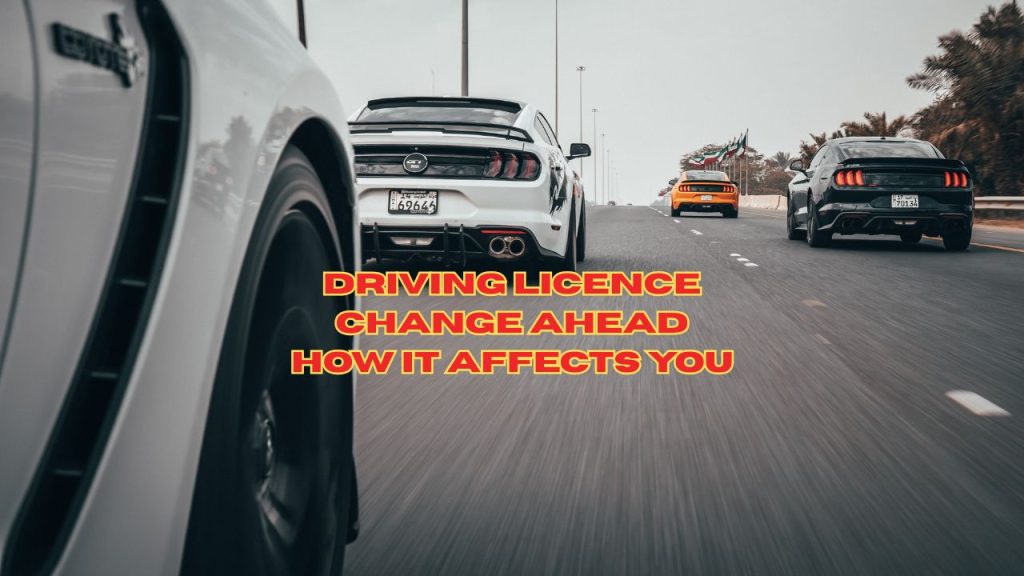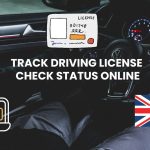Vehicle Tax Rates UK – What You Need to Know Before You Pay

Vehicle tax rates, they’re not exactly exciting, but they’re something every driver in the UK has to deal with. If you’ve got a registered car, you’ll need to pay vehicle tax to keep it legal on the road. Whether you’re renewing your tax, buying a new car, or wondering what all those rates mean, we’ve got you covered.
This easy-to-follow guide walks you through everything: from how to check how much car tax you owe to understanding which vehicles pay what. We’ll also show you how to tax your car online, explain rates based on vehicle registration dates, and highlight who gets a tax break.
Let’s start with the basics what is vehicle tax, and why does it matter?
Introduction to Vehicle Tax (VED)
Every car on the road needs to be taxed, and that’s where Vehicle Excise Duty (VED) comes in. It’s more commonly known as vehicle tax or simply car tax, and it’s a legal must-have unless your vehicle qualifies for an exemption.
Here’s the deal:
- Vehicle tax is managed by the DVLA, and it applies to most cars, vans, and other vehicles.
- It’s based on when your car was registered, how much it pollutes (CO2 emissions), and in some cases, how much it cost when new.
- You’ll need to register the vehicle and pay vehicle tax before driving it, even if it’s brand new.
If your car’s staying off-road, you’ll need to declare it SORN instead. Otherwise, driving an untaxed vehicle could land you with fines or worse.
Don’t worry, though car tax online is quick and simple these days. Whether you’re doing a vehicle tax renewal or taxing it for the first time, the DVLA has made the process easier than ever.
How Vehicle Tax Rates Are Calculated (Based on Registration Date)
Not all cars are taxed the same way. In fact, vehicle tax rates depend heavily on when your car was first registered. The government uses this date to decide how your tax is calculated some methods focus on CO2 emissions, while others go by engine size.

Here’s a quick breakdown of how it works:
- Cars registered on or after 1 April 2017 follow a newer system with a first-year rate and a flat standard rate from year two onwards.
- Cars registered between 1 March 2001 and 31 March 2017 are taxed based on CO2 emissions, with different bands depending on how polluting the vehicle is.
- Cars registered before 1 March 2001 are taxed based on engine size pretty straightforward: small engines pay less, bigger ones pay more.
This setup might sound confusing at first, but once you know your vehicle registration date, it’s easy to find out what you owe. You can always check how much car tax is due online using your registration number.
No matter when your car was registered, you’ll still need to pay vehicle tax each year unless it qualifies for an exemption (we’ll cover that soon).
Vehicle Tax Rates for Cars Registered on or After 1 April 2017
If your registered car was first put on the road from 1 April 2017 onwards, your vehicle tax rates follow the latest system and it’s split into two parts: the first year rate and the standard rate.
1. Vehicle Tax Rates: First Year Rate
When you register the vehicle for the first time, the first-year rate of vehicle tax kicks in immediately. This rate is all about emissions specifically, how much CO₂ your car pumps out.
The government’s goal? Reward cleaner cars and charge more for gas guzzlers.
Here’s how the rates currently look:
| CO₂ Emissions (g/km) | First Year Rate |
| 0 | £0 |
| 1-50 | £10 |
| 51-75 | £30 |
| 76-90 | £135 |
| 91-100 | £175 |
| 101-110 | £195 |
| 111-130 | £220 |
| 131-150 | £255 |
| 151-170 | £645 |
| 171-190 | £1,040 |
| 191-225 | £1,565 |
| 226-255 | £2,220 |
| Over 255 | £2,745 |
If your car has zero emissions, you get a tax-free pass in year one. But as emissions go up, so does your bill quite significantly.
This first-year charge is often rolled into the on-the-road price when buying a brand-new vehicle, so it’s worth asking the dealer if it’s already covered.
And remember even after the first year, you’ll still need to pay vehicle tax just under a different rate.
2. Vehicle Tax Rates: Standard Rate (From Second Tax Year Onwards)
After your car’s first year on the road, the vehicle tax rates switch to a standard annual fee—and this is where things get simpler.
Most cars registered from 1 April 2017 fall under one of the following:
- £190 per year for petrol or diesel cars
- £180 per year for alternative fuel vehicles (like hybrids, LPG, or bioethanol)
- £0 per year for fully electric cars — but only until April 2025
While this flat rate makes budgeting easier, it’s worth noting that some drivers face an extra charge the expensive car supplement.
If your car cost over £40,000 when new (including extras), you’ll pay an additional £410 per year for five years, starting from the second year. That’s on top of the standard rate.
So, for example:
- A £45,000 petrol car would cost £600 a year (£190 + £410)
- A £42,000 hybrid vehicle would cost £590 annually (£180 + £410)
This is why it’s essential to check the vehicle registration date and list price before buying. You can check how much car tax is due or renew your tax easily through the DVLA tax vehicle portal.
3. Expensive Car Supplement
If you’re lucky enough to drive a high-end motor, get ready for an extra charge. Cars with a list price of over £40,000 when new are subject to what’s known as the expensive car supplement.
Here’s how it works:
- It kicks in from the second year after registration.
- You’ll pay an additional £410 on top of your standard annual vehicle tax rate.
- This continues for five years, even if the car’s value drops over time.
So, if your petrol car normally pays £190 a year, you’ll actually pay £600 per year (£190 + £410) during that five-year period.
Good to know:
- This charge applies even if you bought the car used, as long as the original price exceeded £40,000.
- Fully electric vehicles were previously exempt, but this changes in April 2025.
You can check your car’s list price via the dealer or vehicle registration records. If your car qualifies, the DVLA automatically includes the supplement during vehicle tax renewal.
Vehicle Tax Rates for Cars Registered Between 1 March 2001 and 31 March 2017
If your registered car falls into this date range, your vehicle tax rate depends on its CO₂ emissions and fuel type.
This is often called the graduated VED system, and it’s split into 13 bands (A to M). Band A means low emissions (and low tax), while Band M hits the highest polluters with a heavier charge.
Here’s a quick breakdown of some common bands (for petrol and diesel vehicles):
| CO₂ Emissions (g/km) | Tax Band | Annual Rate |
| Up to 100 | A | £0 |
| 101–110 | B | £20 |
| 111-120 | C | £35 |
| 121-130 | D | £150 |
| 131-140 | E | £190 |
| 141-150 | F | £210 |
| 151-165 | G | £255 |
| 166-175 | H | £305 |
| 176-185 | I | £335 |
| 186-200 | J | £385 |
| 201-225 | K | £415 |
| 226-255 | L | £710 |
| Over 255 | M | £735 |
Alternative fuel vehicles (hybrids, LPG) get a small discount usually around £10 less per year.
You can check how much car tax you owe using your vehicle’s CO₂ band on the DVLA tax vehicle tool.
Also, keep in mind:
- These rates apply to most cars unless exempt (we’ll cover exemptions shortly).
- Rates are subject to yearly changes, so check before each vehicle tax renewal.
Vehicle Tax Rates for Cars Registered Before 1 March 2001
For vehicles registered before 1 March 2001, the vehicle tax rates are based on engine size rather than CO₂ emissions. This system was in place before the government switched to the emissions-based system, and it’s still in effect for older cars.
Here’s how it breaks down:
| Engine Size (cc) | Annual Rate |
| Up to 1549 cc | £185 |
| 1500 cc – 1549 cc | £230 |
| 1600 cc – 1999 cc | £295 |
| 2000 cc – 2499 cc | £355 |
| 2500 cc – 2999 cc | £430 |
| Over 3000 cc | £640 |
These rates apply annually, and if you own a car with a larger engine, expect to pay higher taxes. Older cars might be subject to higher rates, particularly if the car is large or has a powerful engine.
What you should know:
- Vehicles with larger engines are typically taxed at higher rates.
- If you’re thinking of buying an older car, factor in these potential tax rates.
It’s also important to note that these rates can change over time, so always check the latest information when renewing your vehicle tax.
Impact of Changes on Electric Vehicles (from April 2025)
Electric vehicles (EVs) have been enjoying tax-free status under the vehicle tax system for some time now, but things are set to change. From April 2025, fully electric cars will no longer be exempt from vehicle tax.
Here’s what you need to know:
- Electric vehicles will be taxed at the standard rate of £180 per year from 2025, which is the same as other alternative fuel vehicles like hybrids.
- The government introduced this change to encourage fairer tax contributions across all vehicles as more EVs hit the road.
- If you own an electric car, you won’t face the expensive car supplement (unless it costs over £40,000), but the standard tax rate will apply from the second year of registration.
What’s the reason for this change?
- The government aims to align EVs with other vehicles in terms of tax contributions as their popularity increases.
- This move also makes room for other environmentally friendly vehicles to have their share of incentives.
So, while EVs will no longer enjoy a tax-free pass, they remain a cost-effective option compared to high-emission vehicles that face significantly higher taxes.
Vehicle Tax Rates Exemptions
While most vehicles are subject to vehicle tax, there are a few notable exemptions that can save you money. Let’s take a look at who can get a break from paying the annual VED:
Vehicles Used by a Disabled Person
If you are a disabled person and you meet the eligibility criteria, you may be able to get vehicle tax exemption for your car. To qualify, the vehicle must be used primarily for your personal transportation.
What’s required?
- A blue badge (for individuals with disabilities) and proof of eligibility must be provided.
- The car must be registered in your name or your nominated driver’s name.
Historic Vehicles
Historic vehicles, which are cars over 40 years old, are also exempt from vehicle tax. This exemption applies to cars that were registered on or before 31 December 1982.
Key facts:
- This exemption is automatic for eligible vehicles.
- You still need to declare SORN (Statutory Off Road Notification) if you don’t plan on using the vehicle.
Cars Declared as SORN (Statutory Off Road Notification)
If your car is off the road for any reason (e.g., being stored or undergoing restoration), you can declare it as SORN. This means the vehicle is not subject to vehicle tax or insurance, as it’s legally off the road.
What happens when a car is declared as SORN?
- No tax is due for the period the car is off the road.
- You must ensure the car remains off public roads until you cancel the SORN declaration.
Cars Used for Agriculture, Horticulture, and Forestry
If you use your car or vehicle for agriculture, horticulture, or forestry purposes, you could be eligible for a tax exemption or reduced tax rate.
Conditions:
- The vehicle must be used exclusively for work in these fields.
- It must meet certain conditions regarding weight, engine type, and registration.
You can check with the DVLA for more details on these exemptions.
Vehicle Tax Payment Options
Paying vehicle tax is easy with several options available. Here’s how you can do it:
Online Payment
The quickest way is to pay online via the DVLA website. Just enter your vehicle registration and payment details to complete the process.
Direct Debit
Spread the cost with monthly payments via Direct Debit. Simply set it up on the DVLA website for convenient, ongoing payments.
By Post
You can pay by post using a cheque or postal order. Follow the instructions on your tax renewal reminder.
At the Post Office
Take your V5C certificate, insurance, and MOT (if required) to the Post Office to pay in person.
By Phone
For those who prefer phone payments, use the DVLA automated service to complete your payment. These payment options make it easy to stay on top of your vehicle tax and avoid penalties.
FAQs
You can check your car tax online through the DVLA website by entering your vehicle registration. It will show the exact amount based on your car’s emissions, age, and engine size.
Yes, you can choose monthly payments via Direct Debit. Just set it up online when you renew your vehicle tax.
Failing to pay your vehicle tax on time can result in a fine and possible legal action. Always ensure you renew before the due date.
If your vehicle is off the road, you can declare it as SORN through the DVLA website or by post. Once declared, you won’t need to pay vehicle tax until the vehicle is back on the road.
Yes, if you sell your car or declare it off the road, you may be eligible for a refund on any unused tax. You can apply for a refund via the DVLA.























